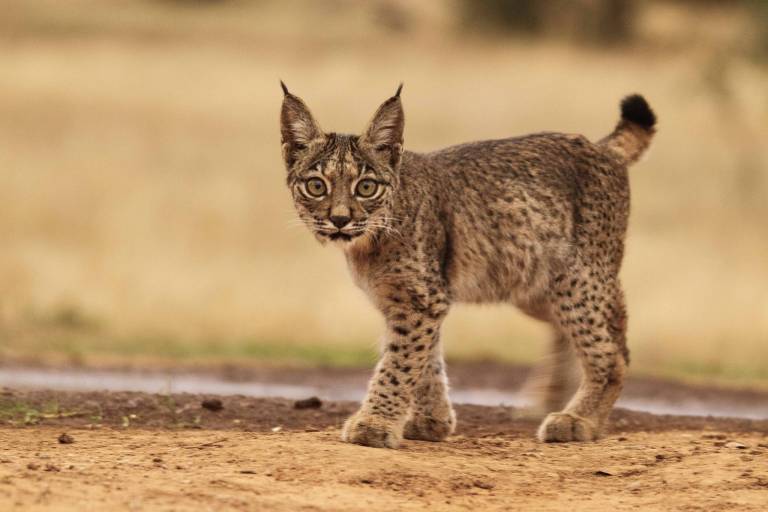How climate change affects species in Europe, a scientific team with the participation of the Doñana Biological Station has conducted extensive research on the initiatives to monitor the species genetic diversity in Europe. Despite the great efforts of some countries in this area, the research shows the low level of monitoring of the genetic diversity of species in Europeespecially in the Mediterranean, especially in areas with high biodiversity.
Living things are distinguished from other individuals of the same species by minor differences in their characteristics genetic material heir apparent. When their environment changes and becomes unfavorable for a population, this genetic variability can help them adapt to the new conditions and prevent them from having to migrate to other habitats or, in the worst case, go extinct.
The ability of species to withstand greater heat or drought, as well as new species colonizing their environment, therefore determines their survival. It is in these extreme situations that it is most urgent to measure the readings genetic diversity.


In this study, all programs from genetic monitoring in the 32 countries of the European Cooperation in Science and Technology (COST) programme. The results are clear: efforts to monitor genetic diversity in Europe are incomplete and insufficient.
The team also evaluated geographical areas with conditions close to the climatic tolerance limits of 147 relevant plant and animal species from a conservation and management perspective.
Populations that have historically adapted to life in these ecologically marginal areas are likely to harbor genetic variants important for population resilience to near-extreme climatic conditions and events.
Taking into account the current pace of climate changecould change the climate in these areas so drastically that it ultimately exceeds the environmental tolerances of the species and threatens these marginal populations with extinction, resulting in the loss of important genetic variants.
The scientific team therefore advocates the extension of genetic monitoring to cover all climate gradients occupied by populations of key species, in order to identify them. genetic variants and facilitate their conservation.
The need to preserve the genetic diversity of species in Europe due to climate change
The geographical areas where more efforts are needed to monitor genetic diversity are mainly found in South-Eastern Europe, in the region of Turkey or in the Balkans. “Without better monitoring of the genetic diversitywe risk losing important genetic variants,” said Peter Pearman, lead author of the study.
Improved monitoring could help identify areas favorable to these variants and protect them to maintain the situation genetic diversity which is essential for the long-term survival of the species. Some of these endangered species also provide important services to humans, such as crop pollination, pest control, water purification or climate regulation.
Spain does not do well in this survey. We have a low presence of genetic monitoring of wild species,” says José Antonio Godoy, researcher at the Doñana Biological Station. Numerous studies on genetic variation in wild species have been carried out in Spain, but almost exclusively on a specific basis, providing only a snapshot of genetic status.
The fact that these analyzes have no continuity over time does not make it possible to discover general trends.
How climate change affects species in Europe and the conservation of genetic diversity
In this situation the lynx is an exception. This is also a case where the genetic diversity is especially relevant: studies indicate that low diversity and inbreeding may have limited the species’ recovery. “Fortunately, the genetic management of the past twenty years appears to be contributing to a spectacular recovery.
Moreover, it has continuity with the current project LIFE “Lynxconnect”, which implements an ambitious monitoring program and genetic managementsays Godoy. The lynx is an example of the need to study the lynx genetic diversity to increase the survival chances of endangered species.
Apart from the lynx, few genetic monitoring programs exist in Spain. “There is a lack of institutional programs that address the need, now included in international biodiversity agreements, to monitor the genetic diversity of biodiversity kind wild,” says the researcher.
“This is especially regrettable because the Iberian Peninsula is an area of high biodiversity that will be particularly affected by climate change.”
In December 2022, during the COP15 UN biodiversity conference, the Kunming-Montreal Global Framework of the Biological diversity, a milestone in global policy to halt biodiversity decline. One of the commitments is to guarantee urgent management measures to preserve and restore nature genetic diversity of species populations to maintain their adaptive potential.
“The importance of genetic diversity has traditionally been undervalued compared to other environmental or demographic factors. On the other hand, concepts and techniques related to genetics have traditionally been outside the training of today’s biodiversity managers.
Fortunately, both factors are starting to be corrected, although we are aware that efforts must continue,” concludes José Antonio Godoy. The international commitment to genetic monitoring will enable better land use planning and support actions for the conservation and restoration of ecosystems, which contribute to ensuring the survival of the kind and the services they provide.
The research involved the efforts of 52 people from 60 universities and research institutes in 31 countries. The results suggest that the European genetic diversity should be systematically adapted to encompass all environmental gradients and encompass all sensitive and high-risk regions. biodiversity.

